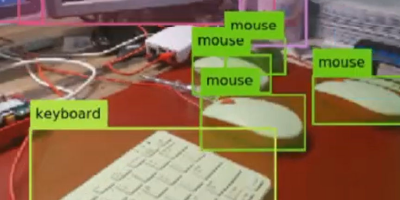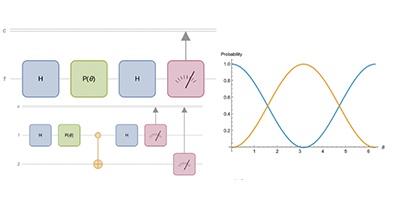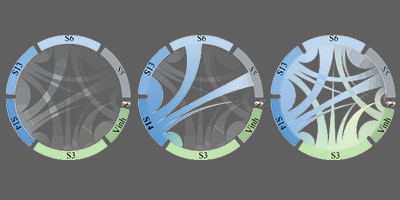Envisioning City Spaces, Aligning DNA Sequences, Classifying Emotional Speech and More: Wolfram Community Highlights


In this roundup of our recent Wolfram Community favorites, our talented users explore different methods of accessing, interpreting and representing data—creating some eye-catching results that offer new ways of looking at the world. We’re also excited to showcase a few projects from alumni of our annual Wolfram High School Summer Camp and Wolfram Summer School. Check out the culmination of their hard work, as well as how Community members find clever solutions using the Wolfram Language.
Fitting the World: Physical Scale from Satellite Images
William Goodall (Wolfram Summer Camp 2019)
How can you decipher the scale of an area, or the size of an object within that area, if the area is shown using a satellite image? Though this is typically quite a challenging issue, as Earth’s terrain can look the same at different zoom levels, William Goodall makes it look easy by using the Wolfram Language. For his Summer Camp project, William produced an algorithm that uses feature extraction and a neural network to accurately predict map zoom.

Tokyo 2020 Olympic and Paralympic Emblems
Kotaro Okazaki

The emblems representing the 2020 Summer Olympics and Paralympics combine checkered patterns used in Japanese culture (named ichimatsu moyo during the Edo period), indigo blue (a traditional Japanese color) and varieties of rectangular shapes (representing the diversity promoted by and found within the Olympic and Paralympic Games). Kotaro Okazaki, an inventor at Fujitsu Limited in Japan, explores the mathematics used to create the emblems.
Crime Rates in US Major Cities (2014)
Diego Zviovich
After wondering which US cities have reported the highest crime rates, Diego Zviovich set out to uncover the answer—and found the Wolfram Language crucial in interpreting and analyzing the crime statistics data compiled by the FBI. Diego homed in on specific fields of interest and assembled them into a Dataset, finally creating a BubbleChart that gives an at-a-glance visualization of national crime rates.
Monitoring the Development and Spread of Cities
Ahmed Elbanna (Wolfram Summer School 2019)
Predicting urban development is essential for citizens, governments and companies. Ahmed Elbanna, a researcher and lecturer at Tanta University, Egypt, explores several different ways to collect satellite images, including manual collection and using the API from NASA’s website, to predict how a city can grow and change. Then to build the model, Ahmed uses the machine learning superfunction Predict to generate a new predicted binary image and add it to the list of binary images of the area in study.

Cartogram Function
Richard Lapin (Wolfram Summer School 2019)
Richard Lapin, a recent BSc economics graduate from University College London, created the Cartogram function in order to generate cartograms (geometrically distorted maps where the distortion conveys information derived from input data). With Cartogram, Richard made great use of the Wolfram Function Repository—a public resource of user-contributed Wolfram Language functions.

More Instructions on Installing a Wolfram Engine Kernel for Jupyter
Seth Chandler
Since we’ve announced the Free Wolfram Engine for Developers, more users than ever before have access to the power of Wolfram’s computational intelligence. One popular way to take advantage of the Wolfram Engine is to call it from a system like Jupyter. Seth Chandler, Wolfram Innovator Award winner and a Foundation Professor of Law at the University of Houston, shows us how by walking us through a comprehensive tutorial on installing a Wolfram Engine kernel for Jupyter.
Mood Detection in Human Speech
Dev Chheda (Wolfram Summer Camp 2019)
Dev Chheda created a system capable of detecting three moods in human speech: angry, happy and sad. Dev determined the features most useful for detecting mood, extracting the amplitudes, fundamental frequencies and format frequencies of each training clip. He then trained the system on labeled samples of emotional speech using Classify, allowing him to identify and label new audio recordings with the mood of the speaker.

Visualizing Data with Chord Diagrams
George Varnavides

Chord diagrams are an elegant way to represent interrelationships between variables. After searching for built-in capabilities or other user-provided answers and coming up short, George Varnavides built a chord diagram from scratch using the visualization capabilities of the Wolfram Language. In addition to sharing his process on Wolfram Community, George also made sure other users would be able to easily access his code by submitting ChordDiagram to the Wolfram Function Repository. Thanks, George!
Implementing a Visualizer for DNA Sequence Alignments
Jessica Shi (Wolfram Summer Camp 2019)
In bioinformatics, DNA sequence alignment is an algorithm-based method of arranging sequences to find similarities between them. Jessica Shi, another Summer Camp student, used pairwise alignment (and a bit of inspiration from a Wolfram Demonstration published in 2011) to create a visual output representing sequence alignment.

If you haven’t yet signed up to be a member of Wolfram Community, please do so! You can join in on similar discussions, post your own work in groups that cover your interests and browse the complete list of Staff Picks. If you’re looking for more interesting work produced by our Summer Program alumni, visit our Wolfram Community groups for Summer Camp and Summer School projects.




Great article Chapin. Love the collection.